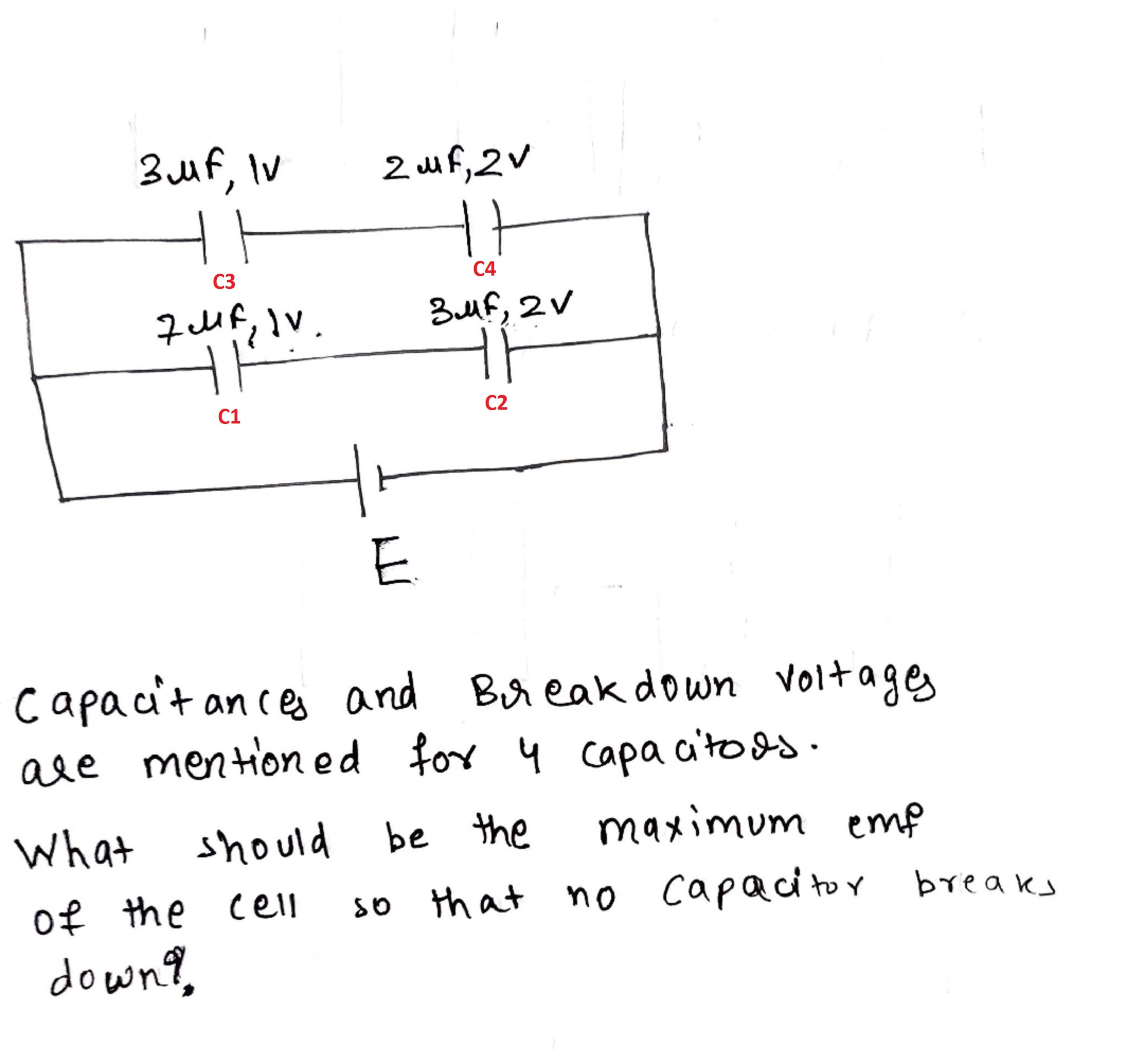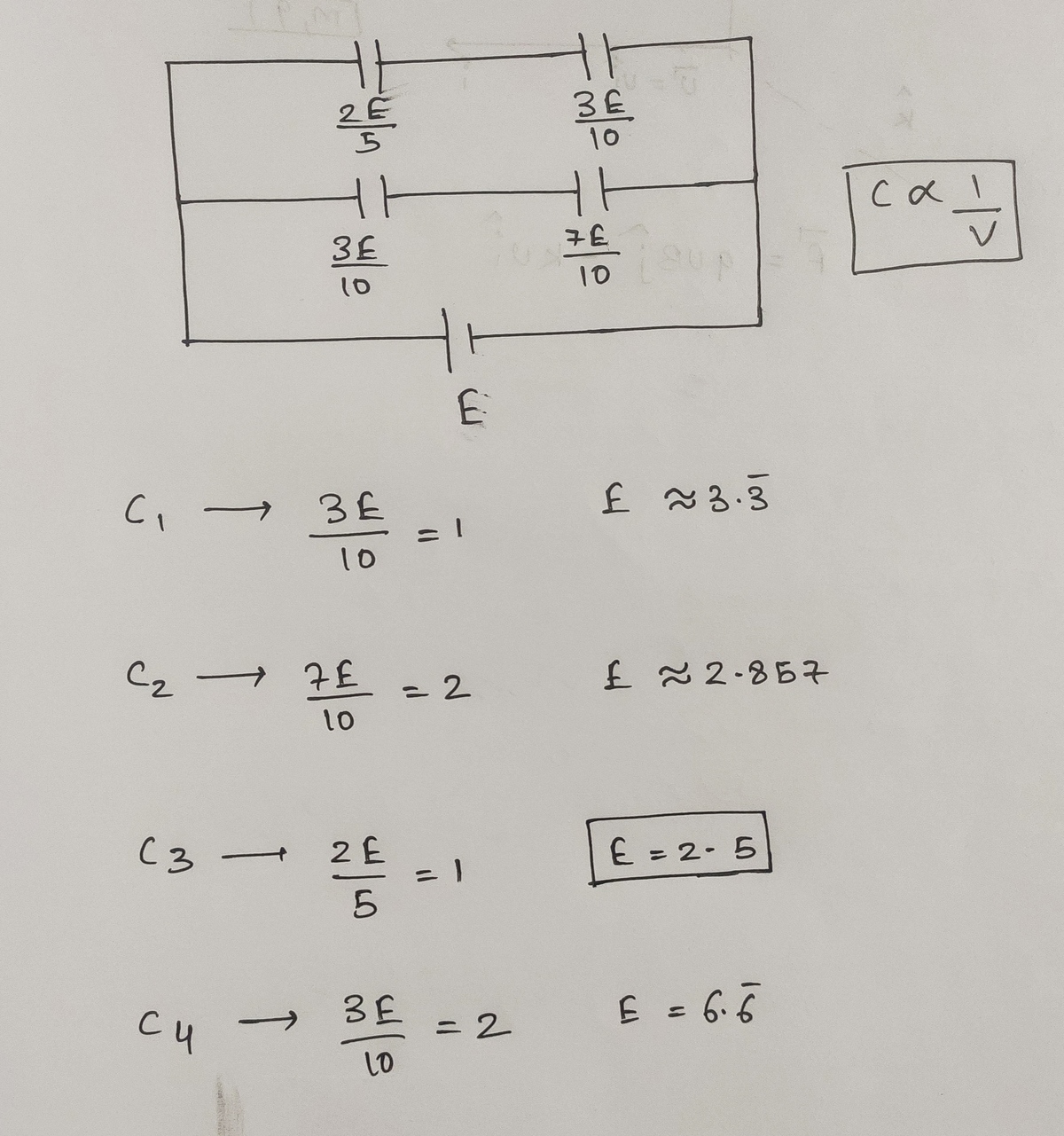Capacitor Over-voltage Exercise
Here is a problem I received recently

The first basic principle is the relationship between the capacitor charge and voltage:
The second basic principle is that since capacitors 1 and 2 are in series, they have the same charge . Capacitors 3 and 4 also have the same charge .
These two principles yield the following:
The procedure is therefore:
1) Sweep over a range
2) For each value of , solve for and
3) Then for each , solve for the capacitor voltages after the charges are known
4) Stop sweeping when any of the capacitor voltages exceeds its limit
As it turns out, is the source voltage at which the first capacitor fails.
1 2 3 4 5 6 7 8 9 10 11 12 13 14 15 16 17 18 19 20 21 22 23 24 25 26 27 28 29 30 31 32 33 34 35 36 37 38 39 40 41 42 43 44 45 46 47 48 49 50 51 | |
Easy Math Editor
This discussion board is a place to discuss our Daily Challenges and the math and science related to those challenges. Explanations are more than just a solution — they should explain the steps and thinking strategies that you used to obtain the solution. Comments should further the discussion of math and science.
When posting on Brilliant:
*italics*or_italics_**bold**or__bold__paragraph 1
paragraph 2
[example link](https://brilliant.org)> This is a quote# I indented these lines # 4 spaces, and now they show # up as a code block. print "hello world"\(...\)or\[...\]to ensure proper formatting.2 \times 32^{34}a_{i-1}\frac{2}{3}\sqrt{2}\sum_{i=1}^3\sin \theta\boxed{123}Comments
@Lil Doug This was a good one
@Steven Chase wait, if I applied a battery of E=2.6 it doesn't mean that the potential across that 1st capacitor will be 2.6 , so how??
There is one more capacitor in series with first one???
Log in to reply
No single capacitor will get the full battery voltage
Log in to reply
@Steven Chase how can you say so confidently?
Log in to reply
It is explained in the note. Both series capacitors in each branch have the same charge. It is therefore impossible for one to have voltage without the other one also having some. So neither one can have the full source voltage across it
Log in to reply
@Steven Chase But how? Confusion is killing me.
@Steven Chase voltage will get divided in both capacitor in each branch? So it will be less than 2.6.isn't it?
Log in to reply
Yes, it is divided across both, but not evenly
Log in to reply
@Steven Chase it will be like (2,0.6),(1.9,0.7),(1,1.6) so what?
Log in to reply
So sweep the source voltage upward until one of the capacitors reaches its limiting voltage
Log in to reply
@Steven Chase so, can you show by sweeping?
Log in to reply
It's in the note
Log in to reply
@Steven Chase why it getting so much hard.
Now I will show my work, let the charge in that 7uF be x
Then, E=7x+3x
Which gives x=5.46 Can you resolve it, where I am lacking.?
Log in to reply
Once you have calculated the charge, you can calculate the capacitor voltages
@Steven Chase This is the ideal explanation, I will give if anyone will ask me this problem
@Steven Chase and the 3rd capacitor fails, not the first one
@Steven Chase Try my new problem.. You have also love affair with this types problem, therefore I posted.
@Steven Chase have a look on 37th problem. Please
@Steven Chase seems that you are online and free. I have some doubts can you help me ? Please
@Steven Chase by the way what is the salary of a person in NASA?